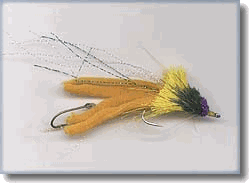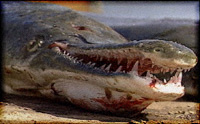 |
 "The Godawful Garish Gar Grabber" Text and Photo by L.J. DeCuir
|
|
We thank the Virtual Fly Box and L.J. DeCuir for use permission!
Tying Instructions:
Fishing the Fly:

Cooking Garfish:
Garfish Courtbouillion
 |
 "The Godawful Garish Gar Grabber" Text and Photo by L.J. DeCuir
|
|
We thank the Virtual Fly Box and L.J. DeCuir for use permission!
